OTTAWA (CANADA)
New York Times [New York NY]
July 5, 2021
By Ian Austen
OTTAWA — At times it was the Royal Canadian Mounted Police who came for them. Other times, it was a school van. However it happened, for generations, Indigenous families in Canada had no choice but to send their children to church-run residential schools established by the government to erode their culture and languages, and to assimilate them.
A national Truth and Reconciliation Commission declared in 2015 that the schools, which operated from 1883 to 1996, were a form of “cultural genocide.”
But the profound damage inflicted by the schools didn’t stop there. The commission cataloged extensive physical, sexual and emotional abuse at the schools, which were often overcrowded, understaffed and underfunded. Disease, fire and malnourishment all brought death and suffering.
Now, the national shame of the schools is again dominating the conversation in Canada.
Since May, new technology has enabled the discovery of human remains, mostly of children, in many hundreds of unmarked graves on the grounds of three former schools in Canada — two in British Columbia and one in Saskatchewan. Who they were, how they died or even when they died may never be fully known.
But Indigenous communities believe these remains are some of the thousands of youths — current estimates range from 10,000 to 50,000 — who went to the schools and never returned home, known as the “missing children.” For their families, the discoveries serve as confirmation of survivors’ stories, and as a new source of trauma.
When students died at the schools, their bodies were rarely returned and parents were often given little or no explanation of their children’s fate. Disease, particularly tuberculous and the Spanish flu epidemic that followed World War I, swept through the overcrowded dorms.
Fatal fires and accidents were frequent, and an unknown number of children escaped only to die from exposure or misadventure as they tried to make their return to distant homes. Sexual and physical violence were widespread and likely a cause of deaths, whether directly or by suicide.
Here are photographs documenting some of the history of the schools; the one below shows a classroom at the All Saints Residential School in Lac la Ronge, Saskatchewan, around 1950. These images don’t show the crowding, the abuse or other terrible conditions. But they do starkly reveal the system’s relentless effort to change the students’ traditional clothing, hairstyles and religious beliefs.
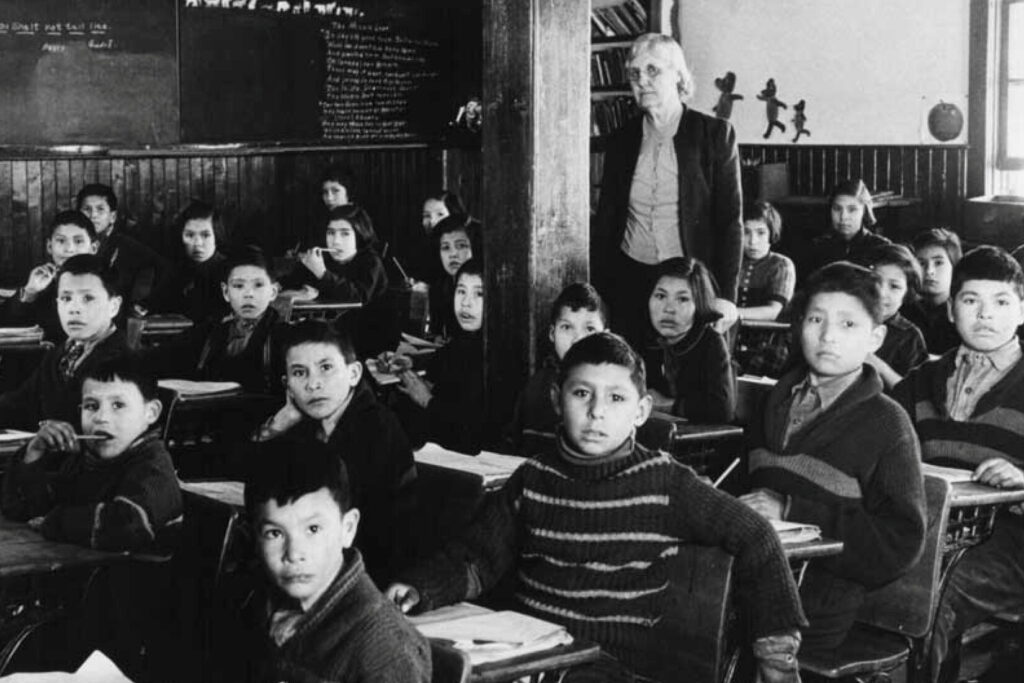
Like all boys who passed through the system, this group getting haircuts at the Shingwauk Indian Residential School in Sault Ste. Marie, Ontario, around 1960 were not allowed to keep their braids. Students were punished, sometimes with beatings, for speaking their languages rather than English or French.
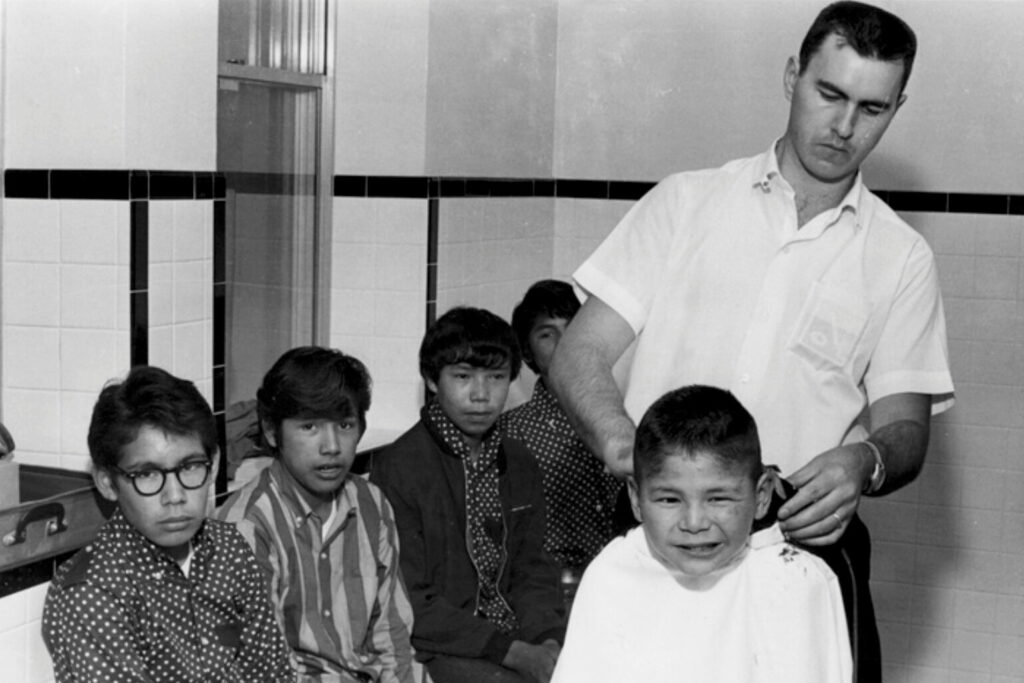
The residential school system grew out of the Gradual Civilization Act of 1857, which required Indigenous men to learn to read and write English and French, and to abandon their traditional names for government-approved surnames.
Sir John A. Macdonald, the first prime minister of Canada, authorized setting up a system of schools for Indigenous children in western Canada in 1883. Eventually the system would total about 150 schools, many in remote locations.
This photo dated around 1900 shows a First Nations elder with children at the Qu’Appelle Indian Industrial School in Lebret, in what is now Saskatchewan. The contrast between his traditional clothing and their Western clothing is striking, his collar of feathers compared with theirs of European lace.
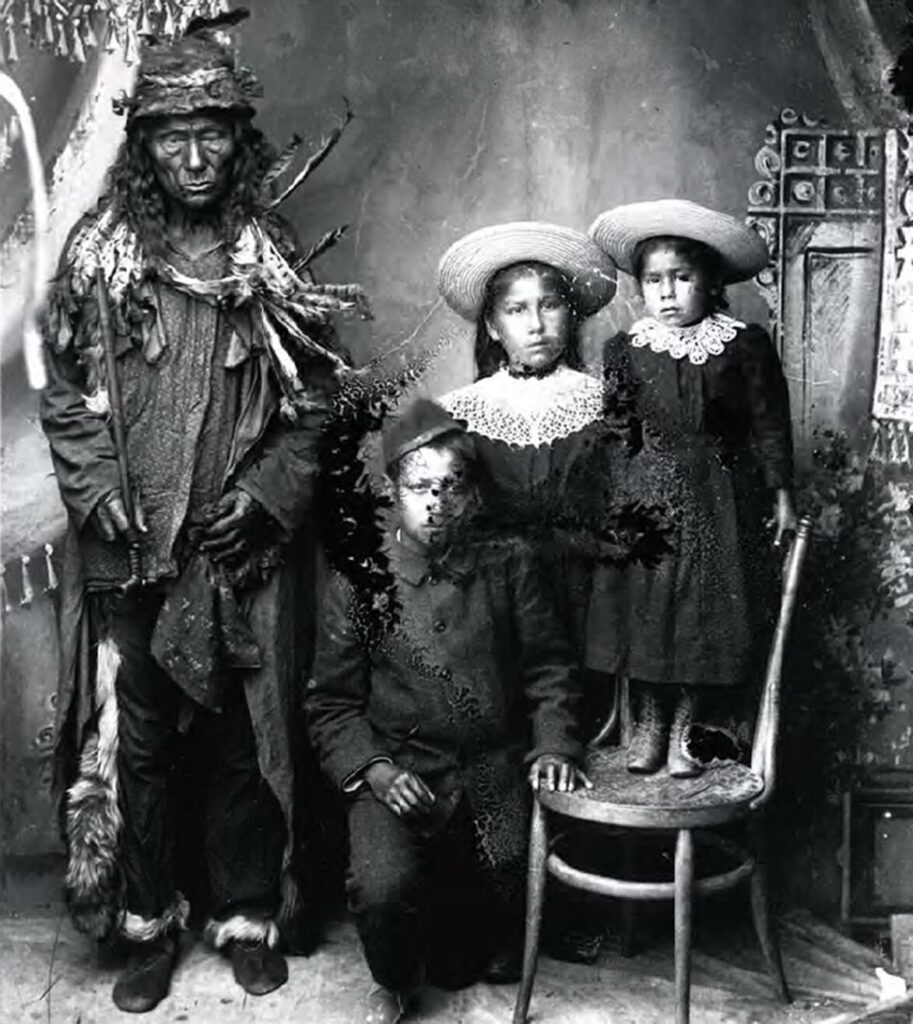
The Roman Catholic Church operated about 70 percent of the schools with the remainder under the control of three Protestant denominations. Religious training was a critical part of the schools, which the churches viewed as missions for converting Indigenous people to Christianity.
Here, young girls take part in their first communion in 1955 at the Spanish Indian Residential School in Spanish, Ontario.
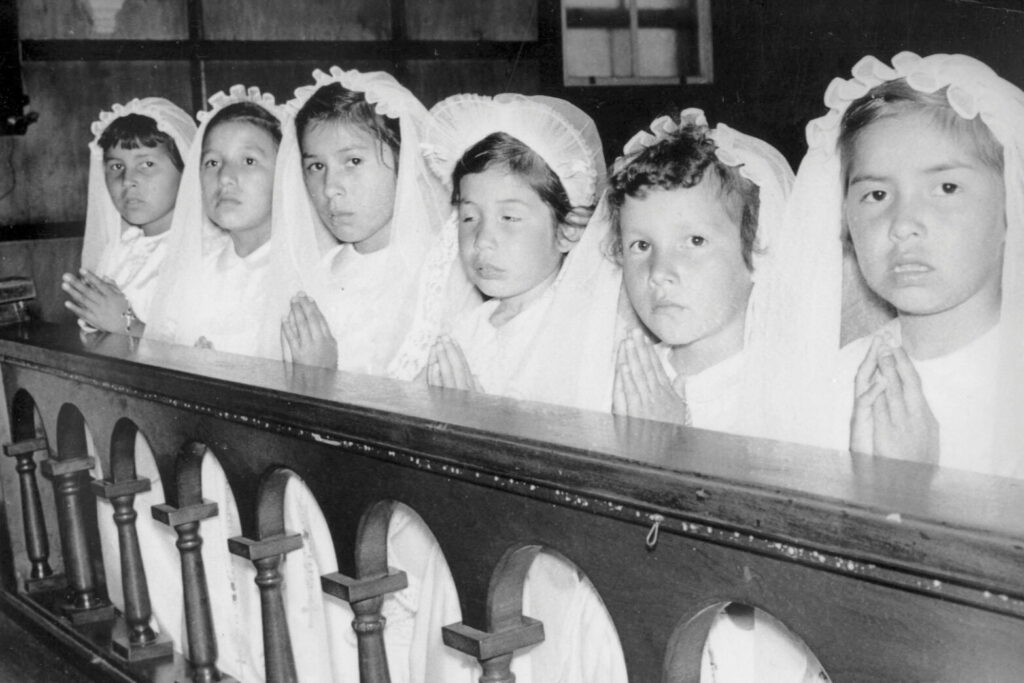
Because of the schools, generations of Indigenous people grew up with limited experience of being parented and were often traumatized by what they had endured. But the system’s enforced family separations and abuses also have had a profound effect on Indigenous people born after the schools were put under government control in 1969. The last schools closed 30 years later.
The system also failed on its own terms, never succeeding in its goal of relegating Indigenous cultures to museums.
Many Indigenous communities have experienced a revival of their languages and cultural practices, which many see as an important part of recovering from the schools’ legacy. The work of the commission also coincided with successful campaigns by the communities to negotiate claims on their lands and to work toward greater self governance.
“Something good has to come out of this,” Joey Desjarlais, 73, said outside the ruins of the Muskowekwan Indian Residential School in Saskatchewan, which he was forced to attend, as were his parents, grandparents and great-grandparents. “Our children need to learn about the residential school, what we went through and what went on in there but also to learn their culture, so at least they’ll get it back.”
The image below shows girls working in the kitchen at the Bishop Horden Memorial School in Moose Factory, Ontario, around 1940.
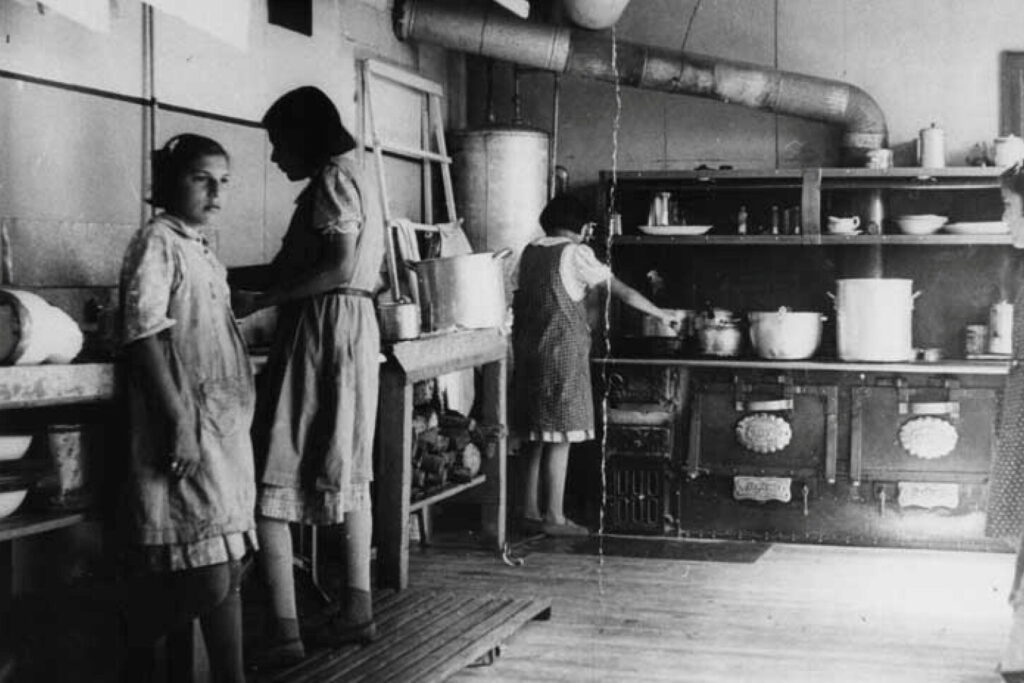
Boys at the Shingwauk Indian Residential School playing with handmade bows, and a game of table hockey, in the 1960s.
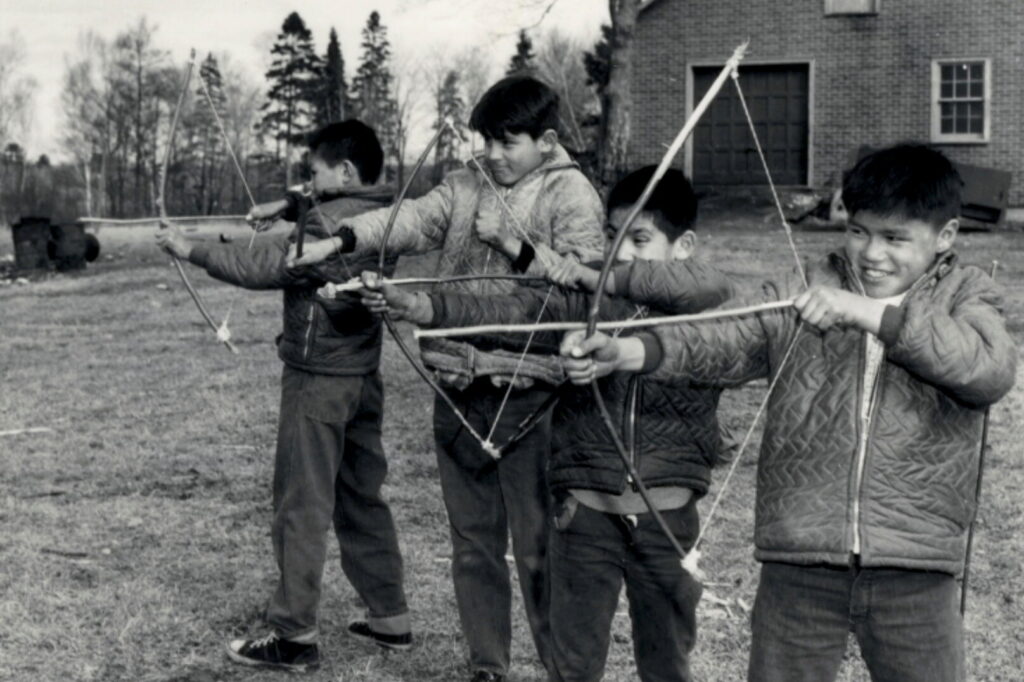
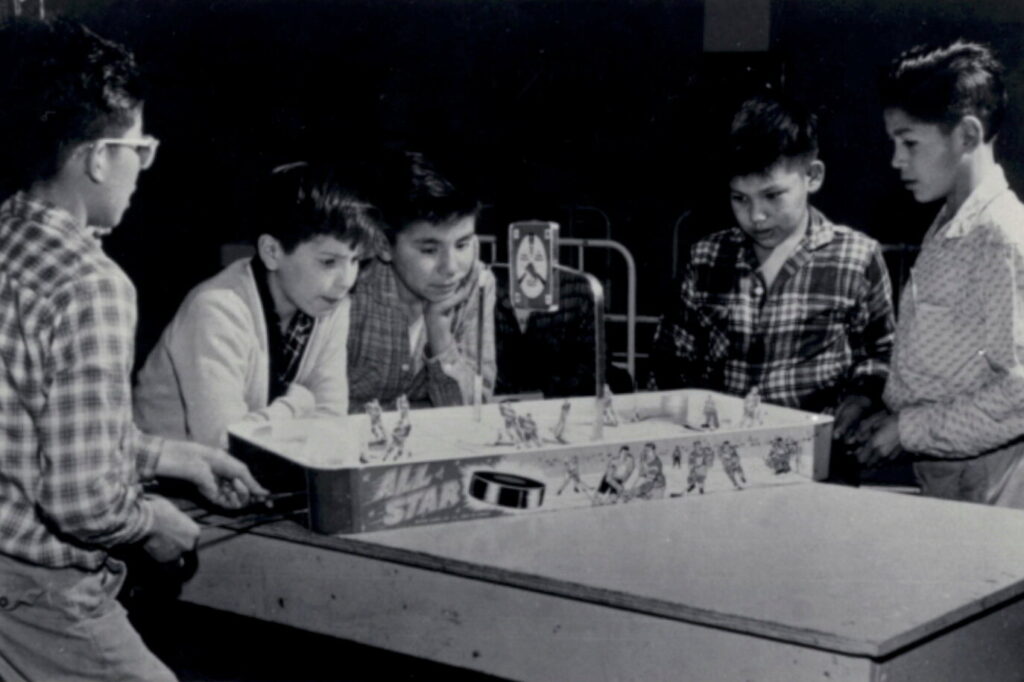
Boys say their prayers in the dormitory at the Bishop Horden Memorial School in Moose Factory, Ontario, in 1950.
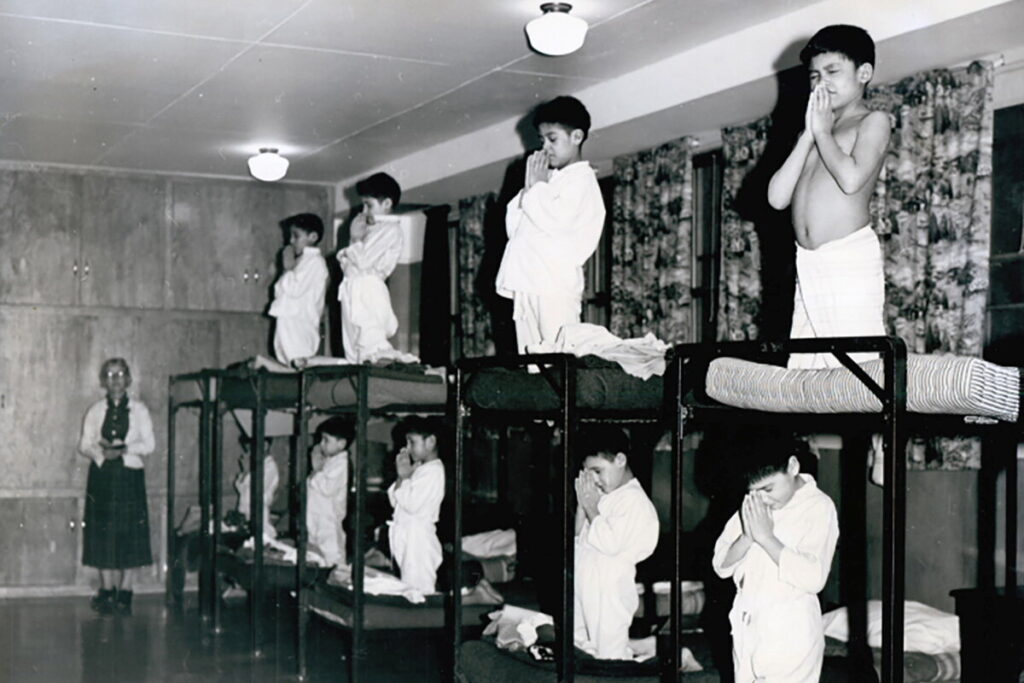
Girls at a residential school in Fort Resolution, Northwest Territories, around 1936. It is estimated that roughly one-third of all Indigenous children were enrolled in the schools by the 1930s.
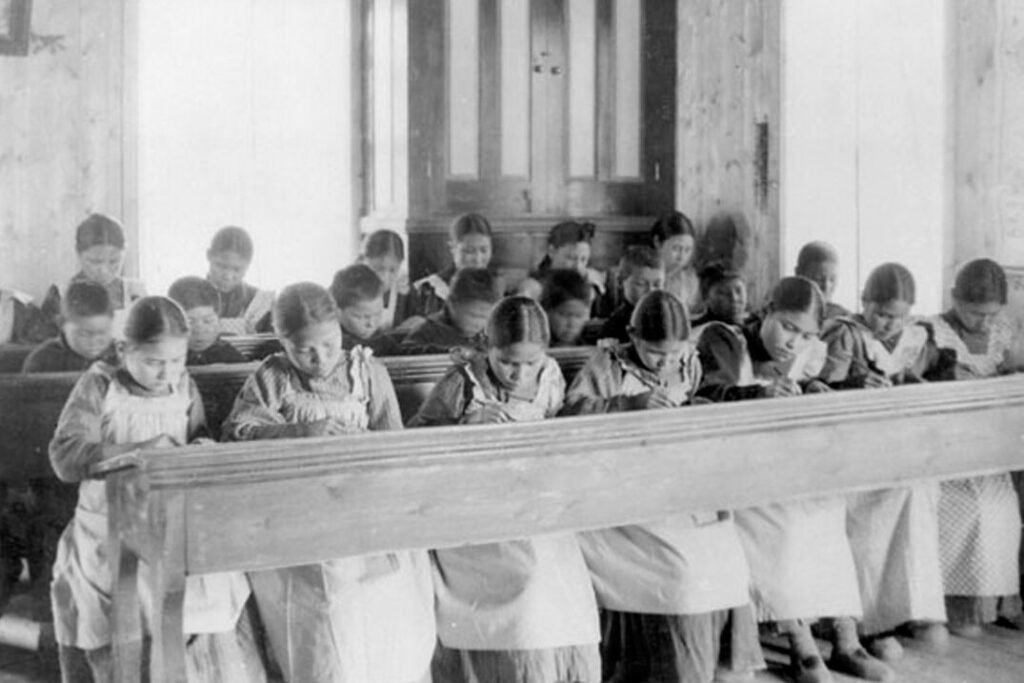
Boys and girls, in their first communion outfits, posing at Spanish Indian Residential School in Spanish, Ontario, in the 1960s.
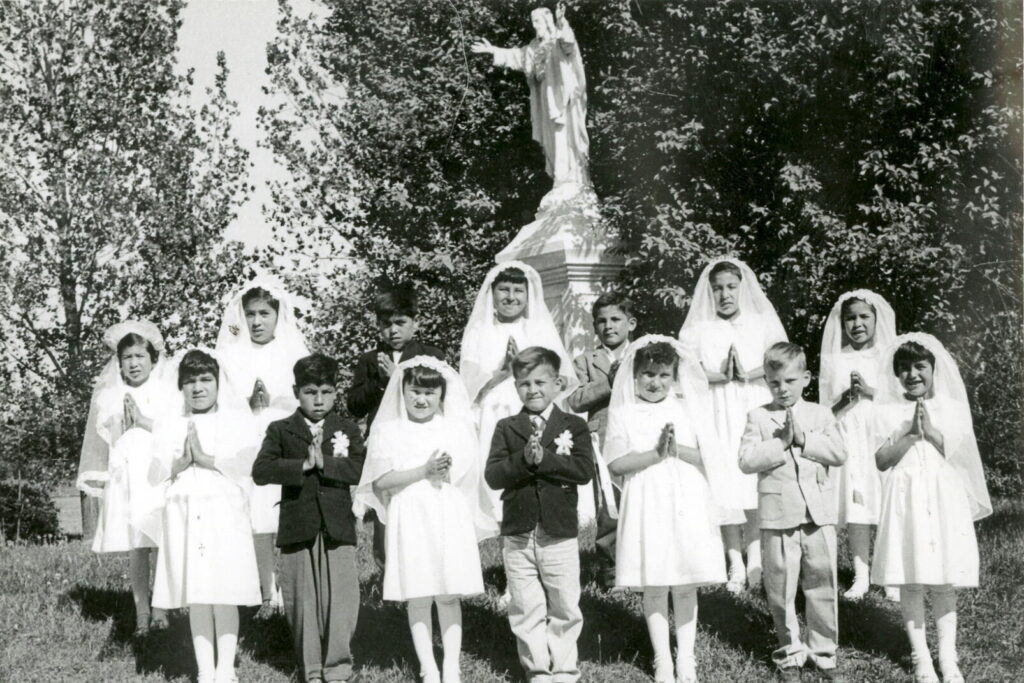
A native of Windsor, Ontario, Ian Austen was educated in Toronto and currently lives in Ottawa. He has reported for The Times about Canada for more than a decade. @ianrausten
